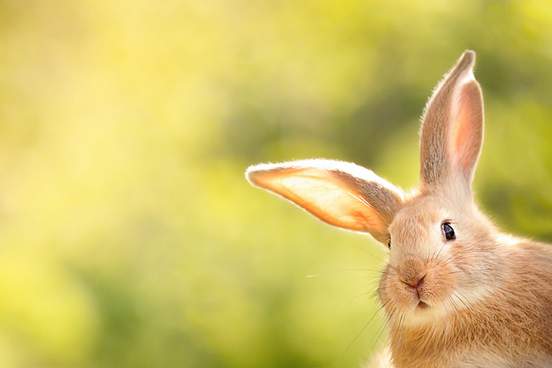
Rabbit/Hare
As with frogs and toads, one way to tell rabbits and hares apart is to get hip to their hops. Hares have longer hind legs than do rabbits (just as frogs have longer hind legs than do toads), in addition to having longer ears and being larger overall. Hares also tend to be solitary, or live in pairs in above-ground nests, while rabbits are more social—often living together in groups of up to 20 in underground tunnels. Another difference between rabbits and hares is how they are born: hares enter the world covered in fur and with open eyes, while rabbits are born furless, blind, and helpless.
Of course, it’s hard to fault anyone for using rabbit and hare interchangeably; certain names are extra confusing—a jackrabbit, for example, is actually a hare.
Rabbits are part of the Leporidae family and they live on every continent except Antarctica. British Columbia is home to a few native species of wild rabbits including white-tailed jackrabbits and the eastern cottontail rabbit, or mountain, cottontail rabbits. I will focus on the latter because despite their name, white-tailed jackrabbits are hares.
— Chadd Cawson, The Columbia Valley Pioneer (Invermere, British Columbia), 19 Jan. 2023
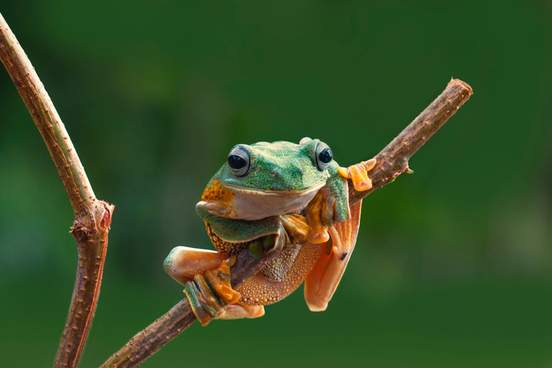
Frog/Toad
Frogs and toads have a lot in common—they’re both small (the largest frog, the goliath frog weighs only seven pounds, tops), they’re both amphibians (cold-blooded vertebrates who can live both on land and in water), and they both enjoy riding tandem bicycles together (we kid, we kid)—so it’s no wonder people mix them up. But what do you do if you’re not a herpetologist and you cross paths with a wee hopping beastie?
Well, first things first, you can relax because technically, all toads fall into the category of frogs, and both are considered anurans, that is, they belong to the same taxonomic order: Anura. If you want to call them both “frogs,” we’re certainly not going to croak at you for it.
That being said, frog is a term usually given to anurans with smoother, wetter skin, and that spend more of their lives in or near water. Toad generally refers to anurans with drier, rougher, bumpier skin, and that are more likely to be encountered farther from a pond, lake, or stream. Most frogs also have larger and stronger hind legs than toads do. Don’t miss this excellent primer for a little more depth, including exceptions to all of the above.
Building a cozy house for toads can be as easy as half-burying a broken pot. Making a frog pond is as straightforward as digging a hole; setting a commercial pond liner, an old bathtub, or even a plastic storage tote in the hole; and filling it with rocks and water.
— Emma Marris, The Atlantic, 8 Mar. 2023
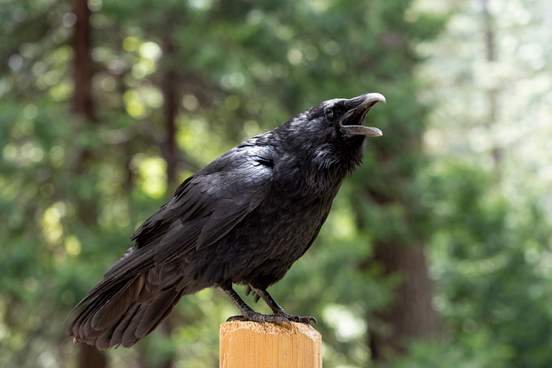
Crow/Raven
Ravens and crows are different birds, yet closely related. Both are highly intelligent (or “wicked smart” if you live the northeastern part of their range) and have rich, black feathers, but ravens are larger, weighing almost twice as much as their crow cousins, and have a thicker bill. Crows are also more widespread across the entire continental United States, and are more likely to form large flocks, while ravens have a tendency to be solitary.
The US has two raven species, with the common raven (Corvus corax) being, uh, more common than the Chihuahuan raven (Corvus cryptoleucus), which is found exclusively in the southwest. The US also has a second crow species, the fish crow (Corvus ossigragus), which is especially difficult to tell apart from the American crow visually, though it has a more nasal, croaking call. Fish crows can be found along the east coast (mostly south of New England), across the Gulf to the Texas-Louisiana border, and up the Mississippi River and its lower tributaries.
Our research suggests that most of the forty-six species generally known as “crows,” including actual crows, Rooks, jackdaws, and ravens, are viewed similarly by most people. Many have been both loved and hated through history. Contrasting their ecologies in interactions with people allows us to weave a richer story. For clarity, however, we use lowercase to refer to general and inclusive groups of species like crows and ravens but capitalize names when we refer to a specific species, such as the Common Raven or American Crow.
— John M. Marzluff and Tony Angell, In the Company of Crows and Ravens (Yale University Press, 2005)
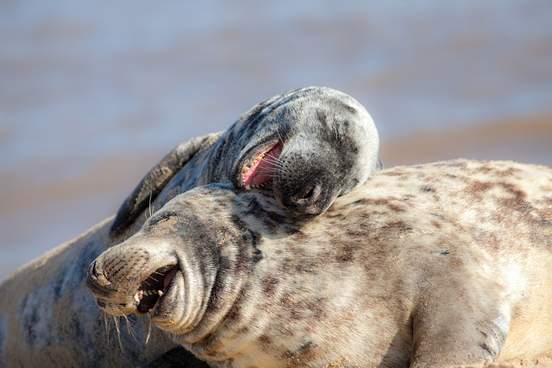
Seal/Sea Lion
The main difference between the marine mammals we call seals and those we call sea lions is size. Technically, sea lions are seals (specifically eared seals), but usually people use seal to refer to hair seals or the closely related fur seals. Sea lions are usually larger than fur seals, lack a thick underfur, and are endemic to the Pacific, while fur seals live all over the southern hemisphere. There are six species of sea lions, five of which—the exception being the California sea lion (Zalophus californianus)—having a lion-like mane, hence their name.
It was after the dinner hour, about 9 p.m. on Jan. 26 when King was found. The skinny pup somehow had crawled up onto a dock, then up a ramp and around a back patio to slip inside the warm kitchen at the King Harbor Yacht Club. … Police officers initially responded to their call. But eventually, someone knew to contact the rescue group that works with the Marine Mammal Care Center, a rehab facility that takes in sick and injured sea lions and harbor seals. The story from there was a happy one. The pup did well, said Marine Mammal Care Center veterinarian Lauren Palmer, who got the call that evening that he was being brought in.
— Donna Littlejohn, The Long Beach (California) Press-Telegram, 2 Apr. 2023
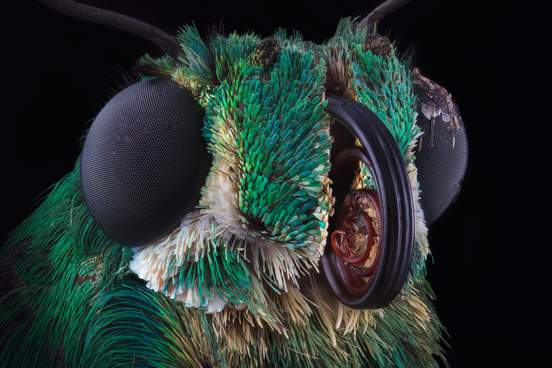
Butterfly/Moth
The insects we call butterflies and moths are all lepidopterans; as larvae they are caterpillars and as adults they have four wings that are usually covered with tiny, overlapping scales. We tend to use the word butterfly for lepidopterans that are chiefly active during the daytime and have slender bodies and broad, often brightly colored wings, and reserve moth for nocturnal lepidopterans whose bodies are stouter, coloring duller, and wings proportionally smaller than butterflies’. Still, as with many of the animal pairs in this article, these requirements are fairly loose.
Poweshiek skipperling butterflies aren’t an obvious pick for an endangered species poster child. For starters, they seem more moth than butterfly—tiny, fuzzy, earth-toned, lacking the panache of, say, the beloved monarch. And then there’s that name, a mouthful (pah-wah-sheek) for anyone unfamiliar with them. Which, right now, is almost everyone.
— Emily Bingham, The Bay City (Michigan) Times, 21 Mar. 2023
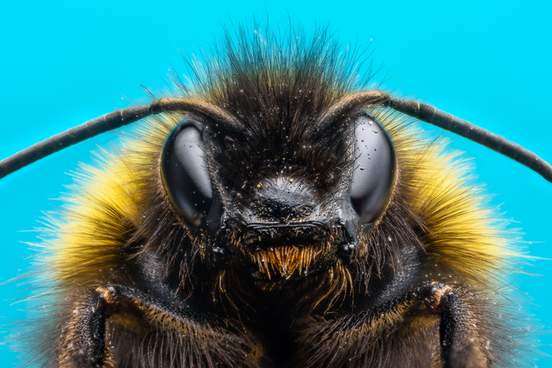
Bee/Wasp
Fair is fair—when you’ve been stung by a winged insect, or afraid you’re about to be, you’re likely unconcerned with accurate nomenclature: both entomology and etymology can buzz off. But in quieter moments—such as, we hope, while you’re reading this—it’s worth taking a closer look at the fascinating, diverse, and ecologically integral creatures we call bee and wasp.
To start, let’s break down our definition of bee:
any of numerous hymenopterous insects (superfamily Apoidea)…
Hymenoptera is an order of insects that includes not only bees, but wasps, ants, sawflies, and more. Often (though not always), such insects, which we may call hymenopterans, “often associate in large colonies with complex social organization.” That sure sounds like bees!
… that differ from the related wasps especially in the heavier hairier body and in having sucking as well as chewing mouthparts, that feed on pollen and nectar, and that store both and often also honey.
Wasps—also hymenopterans—in most cases differ from bees in the aforementioned respects—they tend to have slender and smooth rather than heavy and fuzzy bodies; their mouthparts are evolved for biting; and they are largely carnivorous “and often provision their nests with insects or spiders killed or paralyzed by stinging for their larvae to feed on.” We’re going to keep our distance and just trust the scientists on this last bit. (Yellow jacket, it should be noted, refers to a number of small wasps with yellow and black abdomens).
Bees are environmentally friendly and are vital as pollinators. Each year, bees pollinate an estimated $10 billion of crops in the United States alone. And some estimate that these insect pollinators contribute to one-third of the world’s diet. … Meanwhile, although some species of wasps may be very bothersome to people, the majority of the species are solitary and non-stinging. Additionally, wasps are extremely important in the control of other pest insects because almost all pests are the food source for at least one species of wasp. Without the presence of wasps, this natural insect control would not be possible.
— Paul Opocensky, The Arizona Daily Star, 31 Mar. 2023
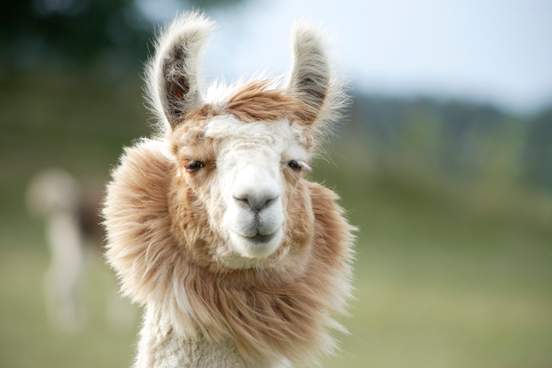
Llama/Alpaca
The case of llama/alpaca is one in which people sometimes use a broader term (in this case, llama) to refer to animals that have different names at the species level (such as alpaca). We define llama as “any of a genus (Lama) of wild or domesticated, long-necked, South American ruminant mammals related to the camels but smaller and without a hump.” Alpaca refers to a specific type of domesticated llama, especially one that hails originally from Peru and is probably descended from the wild vicuña.
The guanaco also belongs to the genus Lama. To confuse things just a skosh, people also use llama to mean specifically the domesticated livestock species Lama glama, a descendent of the wild guanaco. So in some cases it makes sense to refer to any member of the Lama genus as a llama. But in others—especially if you want to draw a distinction between Lama glama and a related species, whether wild or domesticated—it does not.
Alpacas are often confused for llamas, another South American animal imported to the United States. They are much shorter than llamas, which can weigh up to 120 pounds more than an adult alpaca. Llamas have a coarser fleece than an alpaca and were domesticated to serve as pack animals while alpacas were tamed for their fine fleece.
— Eric Freehling, The Butler Eagle (Butler County, Pennsylvania), 12 Feb. 2023
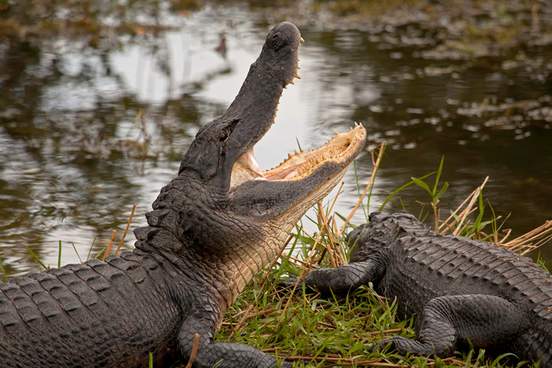
Alligator/Crocodile
If “after a while” of reading through these pairs you haven’t yet said “see ya later,” then we commend you for sinking your teeth so deeply into this article. Not as deep as a crocodilian might, but that’s understandable. Crocodilians—a group of reptiles that includes crocodiles and alligators, as well as caimans and gharials, among others—are undisputed masters of what we like to call, in what may not be a technical phrase, the ol’ clomp and chomp.
The United States is home to two native crocodilians, the American crocodile (whose range includes South Florida as well as parts of Mexico down through Central America to northern South America) and the American alligator (found in the southeastern US from North Carolina to eastern Texas). Alligators have broad heads and U-shaped snouts, while crocodiles have long, tapered, V-shaped snouts.
Florida is home to crocodiles and alligators, and it’s typically the alligators that show up on public beaches. However, alligators have a preference for fresh water, and don’t stay long, experts say. … “American crocodiles” have a higher tolerance for saltwater, but are “shy and reclusive” making beach encounters less likely, the Florida Fish and Wildlife Conservation Commission says.
— Mark Price, The Miami Herald, 7 Nov. 2022
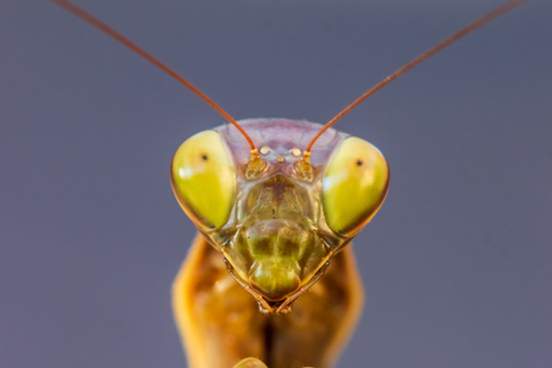
Insect/Bug
Depending on how you use the word bug, all bugs are insects but not all insects are bugs, got it? If that seems confusing or counterintuitive on paper, we suspect it’ll make more sense when you consider specific critters. Do you call monarch butterflies bugs? How about dragonflies? Honeybees? We’re not saying you couldn’t but most people don’t.
The word insect refers to all creatures belonging to a class (Insecta) of arthropods, including things like ants and mantises, etc. (non-insect arthropods include spiders and other arachnids, and crustaceans). Used specifically, the word bug (also called true bug) refers to insects from a specific order (Hemiptera) such as assassin bugs and chinch bugs that have sucking mouthparts, forewings that are thick at the base, and undergo incomplete metamorphosis.
But people use bug more broadly for insects (and sometimes arachnids, which again, are not insects) that look or behave like true bugs—especially if they are considered destructive economic pests or are obnoxious/icky in some way, like headlice or some beetles. That leaves plenty of insects that don’t tend to get called “bug.”
Carolina Chickadees forage for food items almost exclusively on trees and shrubs (sometimes even hunting for food while upside down) but seldom come to the ground. Caterpillars make up the major part of the Carolina Chickadee’s spring and summer diet but they have a diverse diet which includes seeds, berries, aphids, beetles, true bugs, other insects, and spiders. Let’s welcome these garden helpers when we see them and appreciate their positive effects for our gardens and yards!
— Jim Goetze, The Times Record News (Wichita Falls, Texas), 25 Mar. 2023
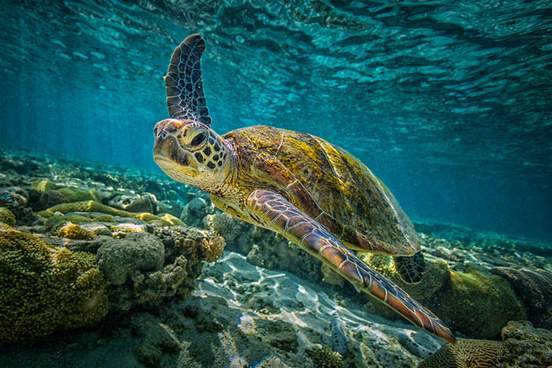
Turtle/Tortoise
Turtle refers to any member of the approximately 300 species of reptiles famous for their hard shells, into which most can withdraw their head, limbs, and tail, but from which they cannot escape (no matter what cartoons have led us to believe). Tortoises are a kind of turtle, specifically ones that spend most of their time on land. We know we breezed through this one rather like a hare than a tortoise, but if you’re curious about the surprisingly infernal origins of the word turtle, take all the time you need with this article.
In this inviting book [The Book of Turtles], [author, Sy] Montgomery introduces turtles with facts, observations, and an irrepressible admiration for the critters as well as a knack for seeing things from their perspective. … After profiling several turtle “celebrities,” such as Lonesome George, who was the last Pinta Island tortoise, and Myrtle, a 550-pound sea turtle who is a star attraction in the Giant Ocean Tank at the New England Aquarium, the book concludes with information about endangered turtles and suggested ways that kids can help them.
— Carolyn Phelan, Booklist, 1 Mar. 2023
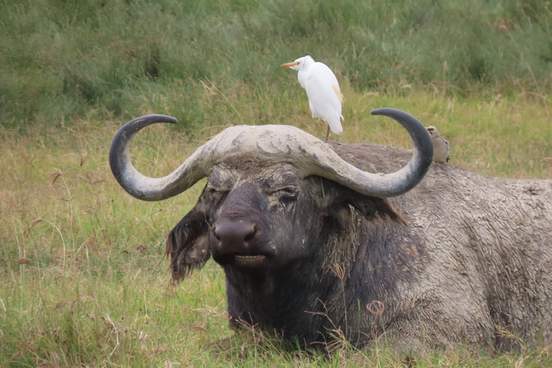
Buffalo/Bison
Who among us has not been, at one time or another, buffaloed by the distinction between bison and buffalo. Not to fear, because to toot our own horn, by now we’re sure you’ll have recognized a familiar theme with these combos. Buffalo refers a number of different wild bovids (animals belonging to a family (Bovidae) of ruminants, such as antelopes, oxen, sheep, and goats) including the water buffalo, Cape buffalo, and yes, two species of bison: the North American bison, whose scientific name is the most excellent and memorable Bison bison, and the smaller European bison (Bison bonasus), also known as a wisent.
The City of Denver and the Denver Parks and Recreation Department transferred 30 bison to the Northern Arapaho and Eastern Shoshone tribes in an effort to return the buffalo back to their lands. … “I think this is a great step because to have our bison relatives back, it’s a happy day,” said Joshua Emerson, co-chair of the Denver American Indian Commission. “There’s a lot more work left to do, but it is a cool step forward.” He said the event symbolizes the reunification of bison relatives to the Indigenous communities that have lived in close harmony with the herds for generations. “The Lakota people are a buffalo nation. We consider them our four-legged relatives,” said Danielle SeeWalker, a Native American artist and a Denver American Indian Commission member. “They’ve always cared and provided for our people, our ancestors and our way of life. We followed the buffalo. Wherever they went is where we went.”
— Isaac Vargas, Denverite, 16 Mar. 2023

Dolphin/Porpoise
While not closely related, porpoises and dolphins share a physical resemblance that often leads to misidentification. Porpoises typically have flat, spade-shaped teeth, triangular dorsal fins, and shortened beaks with relatively small mouths while dolphins have cone-shaped teeth, curved dorsal fins, and elongated beaks with larger mouths. Dolphins are also generally larger than porpoises. Although many people use porpoise to refer to familiar dolphin species such as bottlenose dolphins we note such usage as non-technical, meaning marine biologists keep the two groups of toothed whales distinct (they do not use dolphin on porpoise).
Bottlenose dolphins, the marine mammals best known for doing clever tricks in animal parks, have created a home in the Bay Area after previously spending their lives in Southern California and Baja, Mexico. Surfers catch waves with them at Ocean Beach, hikers have spotted their mottled gray backs at Stinson and Montara Beach, and they’ve explored the edges of San Francisco Bay, at all different times of year. … As the dolphins have moved north, they have aggressive interactions with harbor porpoises, a smaller marine mammal that was already in the area in much larger numbers.
— Tara Duggan, The San Francisco Chronicle, 16 Jan. 2023





